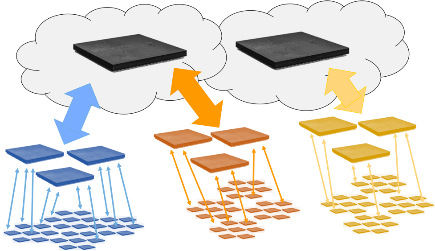This is a continuation of my summaries of Gene Frantz’s series on the IoT, the second post I’m devoting to his discussion of smart sensors.
Gene begins his post Warming Up To Body Heat with an interesting story about the early DSP days at Texas Instruments. (Gene was at TI for many years, and is considered the Father of the DSP.) He was working with a client that designed hearing aids, and the client was under the impression that they were using a three-volt version when, in fact, they were using a five-volt DSP – the only version TI produced at that point. Anyway, one upshot was that TI started making a three-volt DSP. The other upshot was the movement “to make power dissipation a performance metric of the DSP,” and a goal “to continue down to lower and lower wattages”. Eventually, Frantz ended up asking TI engineers to think about creating “devices that ran on ‘body heat.’” (By the way, on this last one, the industry is getting there!)
The topic of Gene’s next post on smart sensors gets into wireless communications. He starts off by mentioning that the first wireless system was smoke signaling (used by Chinese soldiers to communicate between towers built along the Great Wall). His point? How a smart sensor communicates with the IoT aggregator will have a major impact on the power budget, so “the method of communication with the aggregator needs to have the lowest power dissipation possible,” leading to the need for smart sensor architecture that’s “driven by whether it took less energy to compress a bit of data than the energy to transmit a bit of information.”
Gene then gathers his thoughts on smart sensor communication, that includes the opinion that the standard methods currently in use aren’t the answer to IoT requirements, and that the comms methods for any specific design “will be non-standard and perhaps proprietary.” He believes that “the methods may take on a broader sense of wireless than we would first think to you.” I’m looking forward to hearing about new wireless communications approaches.
The last post in Gene’s IoT series took him into “a peek into the future as I see it.” To some exten t, the future belongs to aggregators, which he believes “will become smarter, smaller, an d lower p ow er while enveloping much of the functions of the clouds and smart sensors. (Recall that the three IoT components he writes about our aggregators, the cloud, and smart sensors.)

The bigger hurdle of the IoT future will be in how we process all of this data we are collecting to get interesting information and take the appropriate actions. Further, we will need to do it efficiently, in real-time, while not throwing more energy consumption and performance at it.
For our roadmap to the future to make the necessary big leaps, we will need to make some fundamental changes.
One of those “big leaps” may be making the “move toward being analog rather than digital.” This from the Father of the DSP.
Talk about back to the future!
This about wraps up my series on Gene Frantz’s Embedded Computing series, other than to say that I really enjoyed reading (and writing about) Gene’s thoughts and recommend that you take a look at his full posts.
